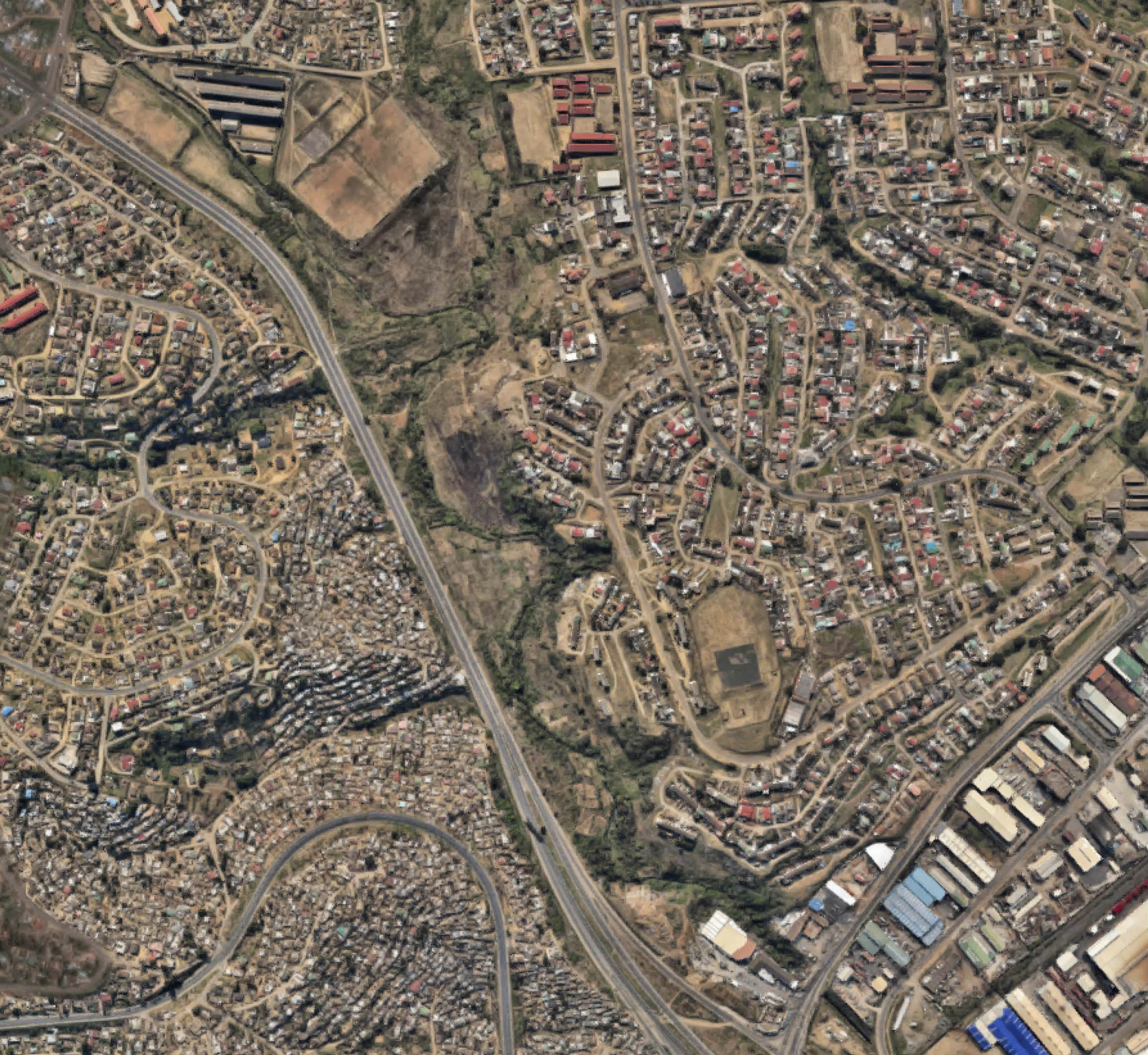Engaging the Buffer Zone:
Bridging Divides with Human Infrastructure
“Solid walls are replaced in the modern city by spaces, by voids, which tend much more to the boundary condition. Motorways that cut through cities are the obvious example: crossing through cities are the obvious example: crossing through six or eight lanes of traffic is perilous; the sides of motorways in cities tend to become withered spaces; these invisible walls infamously have been used to mark off the territories separating the rich from the poor, or race from race.” -Richard Sennett
The industrial buffer zone between the township of KwaMashu and the suburb Phoenix in the city of Durban, South Africa, is one of the many divisions designed during Apartheid. This project identified existing desire path lines that are currently being used to cross this buffer zone and used them as a guide to begin to bridge the physical divide. The project followed two strategies based each on a principle observed in the city. First, Programmable Infrastructure: commerce follows movement –a safe and reliable commute can stimulate economies. Second, Program/Distance Ratio: For any given linear distance, social infrastructure and public space should be allocated.
Based on these strategies, the project took upon the following goals:
1. Betterment of existing routes
2. Stimulation of economy through an improved commute
3. Generate a reverse flow: attract people from Phoenix to KwaMashu






